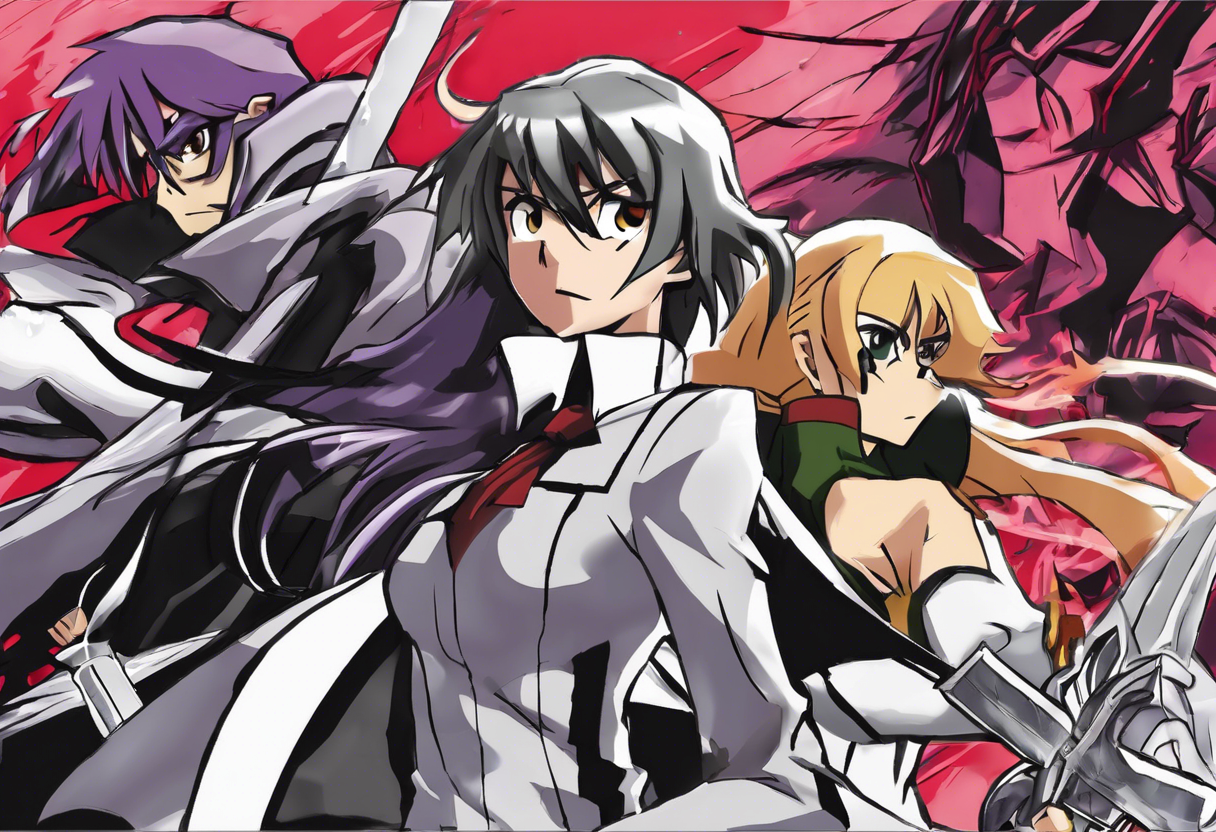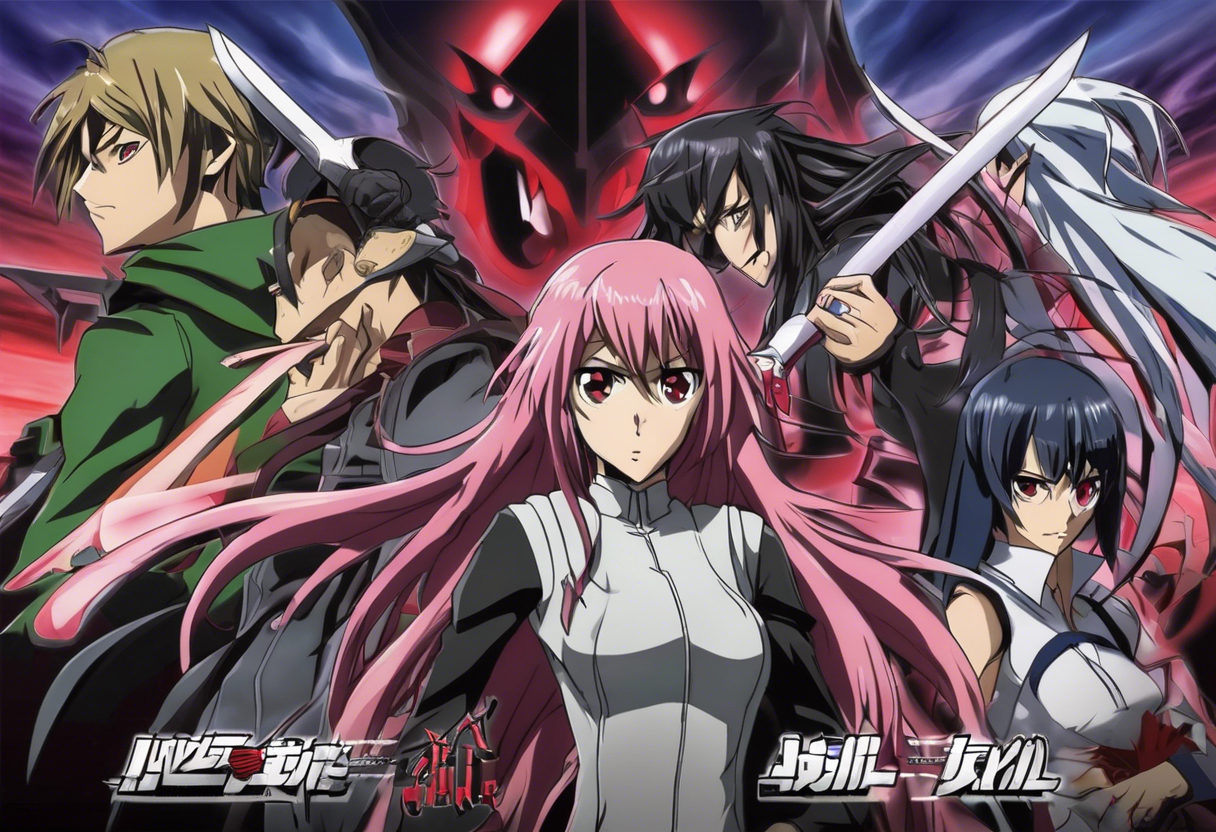Contents
Akame ga Kill – Episode 10: Kill the Temptation
Introduction
Akame ga Kill Episode 10, titled "Kill the Temptation," is a pivotal installment in the anime series based on the manga of the same name by Takahiro and Tetsuya Tashiro. The episode was directed by Tomoki Kobayashi, written by Makoto Uezu, and produced by White Fox. It initially aired on September 7, 2014. This episode stands out within its genre for its intense character interactions, moral dilemmas, and the escalating conflict between the Revolutionary Army and the Empire.
Plot Summary
In "Kill the Temptation," the narrative unfolds with multiple concurrent plot threads that deepen the characters’ complexities and the overall conflict. Tatsumi, having narrowly escaped the palace, finds himself in a precarious situation as he attempts to navigate his feelings and loyalties. He is with Esdeath, the formidable and ruthless general of the Empire, who has developed romantic feelings for him. Despite the danger, Tatsumi tries to convince Esdeath to defect to Night Raid, leveraging her affection for him in a daring and risky move [2][4].
This conversation is fraught with tension, as Esdeath’s worldview is fundamentally at odds with Tatsumi’s ideals. She believes in the survival of the fittest and is indifferent to the corruption within the Empire, whereas Tatsumi is driven by a desire to bring justice and end the suffering of the people. The interaction highlights Tatsumi’s naivety and bravery, as well as Esdeath’s unwavering commitment to her principles. Despite his efforts, Tatsumi’s attempt to sway Esdeath ends in failure, and he barely escapes with his life, receiving only a slap from her instead of the severe punishment he could have faced [2][4].
Meanwhile, the Jaegers are on a mission to eliminate a group on the outskirts of the Imperial Capital. This subplot underscores the ongoing struggle between the Empire’s forces and the various factions opposing them. The Jaegers, including Wave and Kurome, are depicted as complex characters with their own moral ambiguities and motivations. Wave, in particular, is shown to genuinely believe in the justice of the Empire’s cause, contrasting with Esdeath’s more pragmatic and ruthless approach [1][2].
The episode also delves into the ongoing assault on the Capital by the Revolutionary Army. Mine and Tatsumi face off against Seryu and the last Rakshasa demon, showcasing the intense battles and personal stakes involved. Najenda and the rest of Night Raid are engaged in their own battles, hunting down key targets within the Empire’s hierarchy. This multi-front conflict underscores the scale and complexity of the war, as well as the personal sacrifices and struggles of the characters involved [3].
Character development is a significant focus in this episode. Tatsumi’s actions and decisions reveal his growth as a character, from a naive villager to a determined fighter willing to take risks for his beliefs. Esdeath’s character is also explored in depth, highlighting her strength, conviction, and the emotional vulnerability she shows towards Tatsumi. The dynamic between Wave and Kurome is another key aspect, as it sets the stage for their future actions and the moral dilemmas they will face [2][4].
The setting of the episode is predominantly within and around the Imperial Capital, emphasizing the central role this location plays in the conflict. The capital is a symbol of the Empire’s power and corruption, and the battles fought here are crucial to the narrative’s progression. The narrative arcs of the characters intersect and collide in this episode, leading to significant developments that shape the story’s trajectory.
Themes and Symbolism
"Kill the Temptation" explores several central themes that are pivotal to the series. One of the primary themes is the struggle between justice and survival. Tatsumi’s attempt to convince Esdeath to join Night Raid highlights the moral differences between characters and the difficult choices they must make. Esdeath’s adherence to the principle of survival of the fittest contrasts sharply with Tatsumi’s desire for justice, illustrating the complexity of moral standpoints in a world filled with corruption and violence [2][4].
Another significant theme is the power of emotions and relationships. Esdeath’s love for Tatsumi is a compelling aspect of her character, showing a vulnerable side to an otherwise ruthless figure. This dynamic underscores the human element within the series, where characters are driven by more than just ideology or duty. The relationships between characters, such as Wave and Kurome, also play a crucial role in shaping their actions and decisions.
Symbolism is also evident in the characters’ Teigu, which represent both their power and their vulnerabilities. Tatsumi’s Teigu, Incursio, is a symbol of his growth and the risks he takes, while Esdeath’s Teigu reflects her strength and her emotional state. The Teigu serve as more than just tools; they are extensions of the characters’ personalities and destinies.
Cultural Impact
Upon its release, "Kill the Temptation" received significant attention for its intense action sequences, character developments, and the moral dilemmas presented. The episode contributed to the series’ reputation for its dark and mature storytelling, appealing to audiences who appreciated complex characters and plotlines.
The episode’s influence can be seen in its impact on the broader anime community. It has been referenced and discussed in various forums and reviews, highlighting its significance within the series. The character interactions and plot twists have also inspired fan art, fan fiction, and other creative works.
Critical Reception
Critically, "Kill the Temptation" was well-received for its engaging storyline and character development. Reviewers praised the episode for its tense and emotionally charged scenes, particularly the interaction between Tatsumi and Esdeath. The episode’s pacing and action sequences were also commended for their intensity and impact.
However, some critics noted the episode’s reliance on convenient plot devices and the somewhat predictable nature of certain events. Despite these criticisms, the episode was generally seen as a strong installment in the series, advancing the plot and deepening the characters’ complexities.
Legacy
"Kill the Temptation" remains a significant episode in the Akame ga Kill series, contributing to its enduring legacy. The episode’s themes of justice, survival, and the power of emotions continue to resonate with audiences. It has inspired other anime series and creators to explore similar themes and character dynamics.
The episode’s influence can be seen in its continued discussion and analysis within anime communities. It serves as a prime example of how anime can tackle complex moral issues and create compelling, multidimensional characters. As part of the broader Akame ga Kill narrative, "Kill the Temptation" plays a crucial role in the series’ overall impact on the anime genre.
References
- https://animevice.fandom.com/wiki/Episode_10_(Akame_ga_Kill!)
- https://www.angryanimebitches.com/2014/09/akame-ga-kill-episode-10-kill-the-temptation/
- https://www.imdb.com/title/tt4198256/plotsummary/
- https://triptychalessandro.wordpress.com/2014/09/10/akame-ga-kill-episode-10-review-kill-the-temptation/
- https://en.wikipedia.org/wiki/Akame_ga_Kill!







